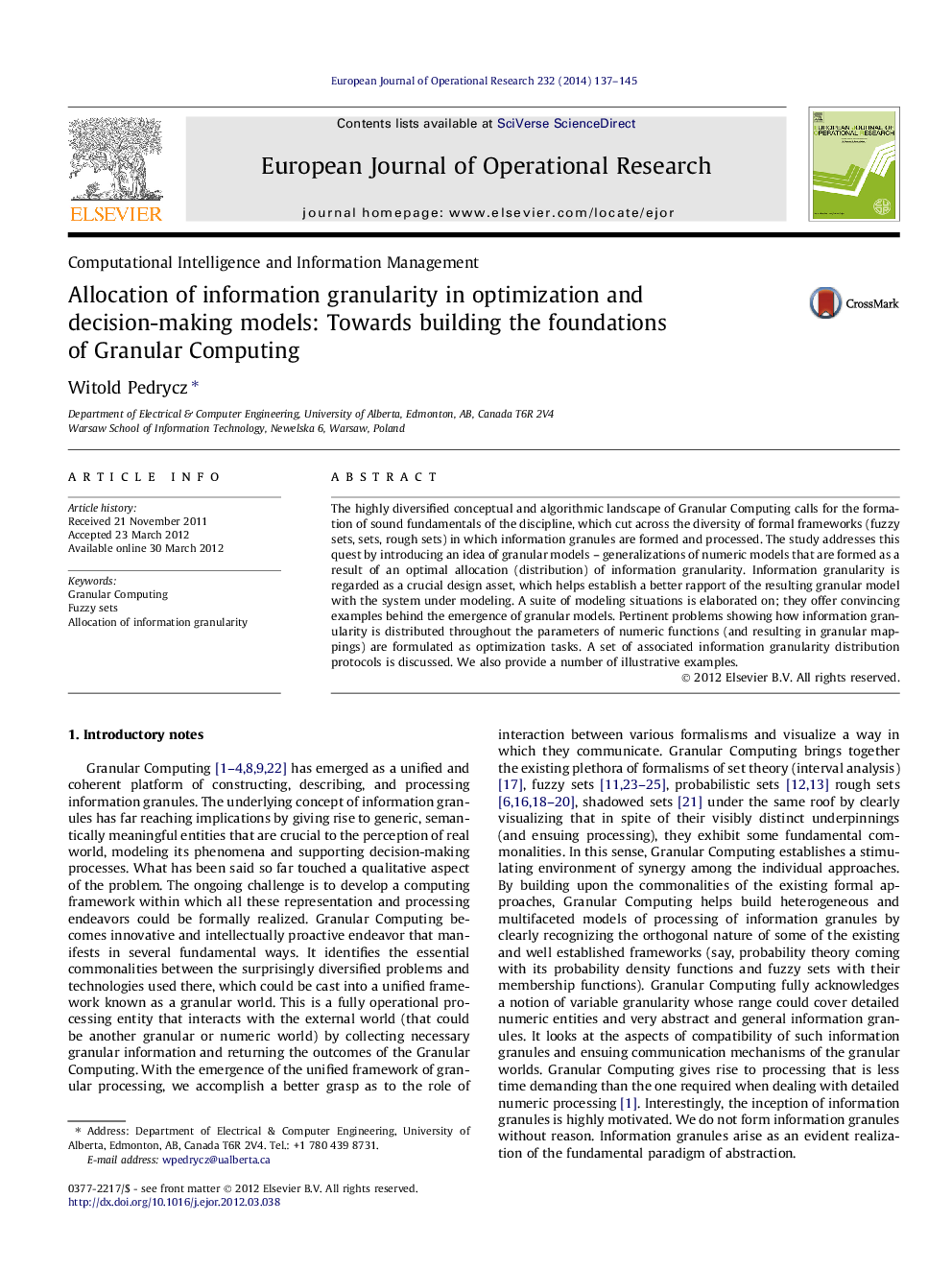| Article ID | Journal | Published Year | Pages | File Type |
|---|---|---|---|---|
| 479903 | European Journal of Operational Research | 2014 | 9 Pages |
The highly diversified conceptual and algorithmic landscape of Granular Computing calls for the formation of sound fundamentals of the discipline, which cut across the diversity of formal frameworks (fuzzy sets, sets, rough sets) in which information granules are formed and processed. The study addresses this quest by introducing an idea of granular models – generalizations of numeric models that are formed as a result of an optimal allocation (distribution) of information granularity. Information granularity is regarded as a crucial design asset, which helps establish a better rapport of the resulting granular model with the system under modeling. A suite of modeling situations is elaborated on; they offer convincing examples behind the emergence of granular models. Pertinent problems showing how information granularity is distributed throughout the parameters of numeric functions (and resulting in granular mappings) are formulated as optimization tasks. A set of associated information granularity distribution protocols is discussed. We also provide a number of illustrative examples.
► A fundamental concept of information granularity is introduced. ► Information granularity is regarded as a design asset in system design. ► Discussed is a problem of optimal allocation of information granularity. ► Various allocation protocols are studied. ► Main categories of granular models are given.
